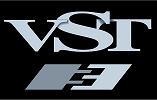Loading...
Searching...
No Matches
Introduction

Welcome to VST SDK 3
The VST 3 SDK (Virtual Studio Technology Software Development Kit) is a collection of software development tools included in one package. This allows plug-in developers to create plug-ins in VST 3 format and host developers to load VST 3 plug-ins into a DAW or audio editor.
For the overview documentation, please use the online portal: Online Documentation Here!